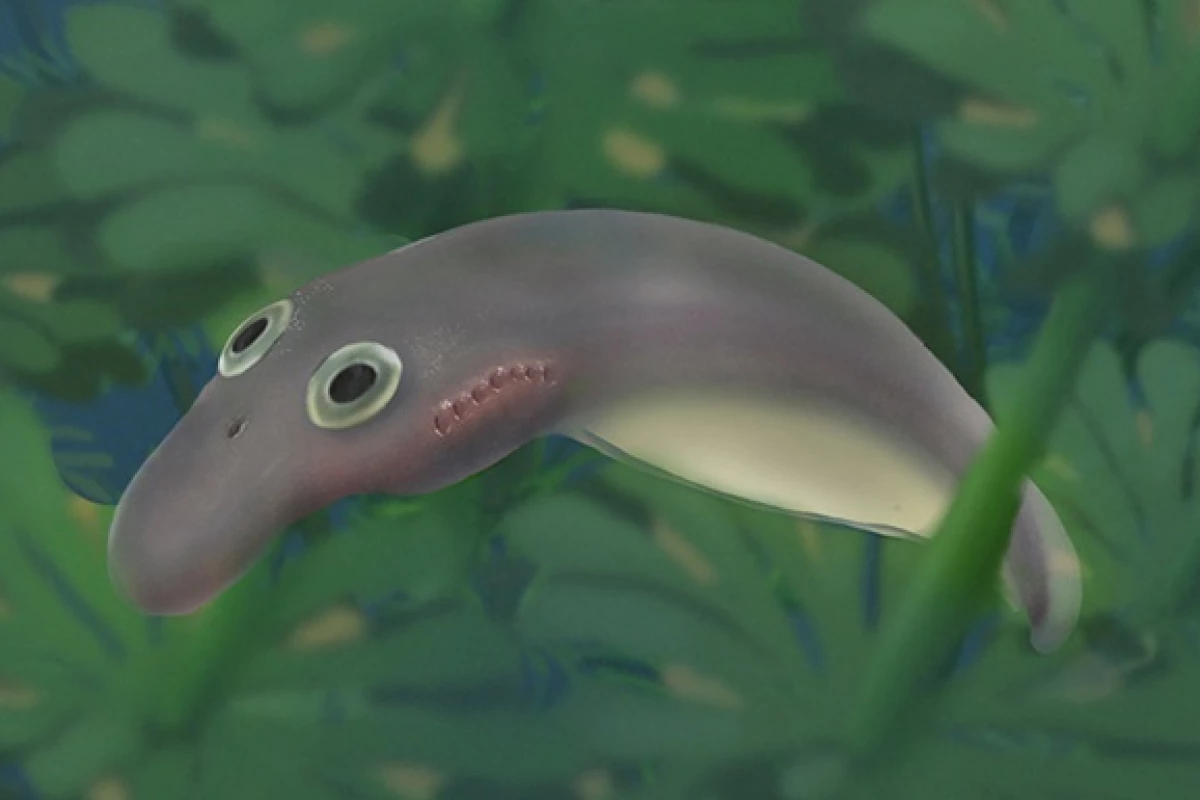For the past 150 years or so, scientists have theorized that the life cycle of the present-day lamprey mirrors the evolution of all fish – and thus of all vertebrates. Newly analyzed fossils, however, indicate that such is not the case.
The lamprey is a long eel-like fish, which latches onto the bodies of other fish using its sucker-like mouth. A ring of teeth within that mouth then rasps away the skin of the host fish, so the lamprey can feed on its blood. And while adult lampreys are free-swimming, sighted fish, their larvae are tiny blind worm-like creatures that burrow into the riverbed, then filter-feed on food particles carried past in the current.
Because previously discovered fossils indicated that adult lampreys have changed very little over the past 360 million years (or more), it was thought that their life cycle was just as ancient. Scientists thus theorized that the animals' transition from bottom-dwelling filter-feeders to free-swimming predators was a remnant of the process in which wormy invertebrates eventually evolved into the first vertebrate fishes.
Now, though, fossils of lamprey hatchlings discovered in Illinois, South Africa and Montana are challenging that theory. Some of the fossilized remains include an egg sac, indicating that the creatures had only recently hatched. And importantly, they looked very much like miniature adult lampreys, complete with eyes and tooth-lined sucker mouths. In other words, they were not similar to today's riverbed-burrowing larvae.

Based on these findings, it is now thought that the filter-feeding larval stage may have subsequently evolved as a means of adapting to life in freshwater lakes and rivers – originally, lampreys were strictly marine animals.
"Lampreys are not quite the swimming time capsules that we once thought they were," says the University of Chicago's Prof. Michael Coates. "They remain important and essential for understanding the deep history of vertebrate diversity, but we also need to recognize that they, too, have evolved and specialized in their own right."
A paper on the research – which also includes scientists from the Canadian Museum of Nature and the Albany Museum – was recently published in the journal Nature.
Sources: University of Chicago Medical Center, University of the Witwatersrand via EurekAlert




